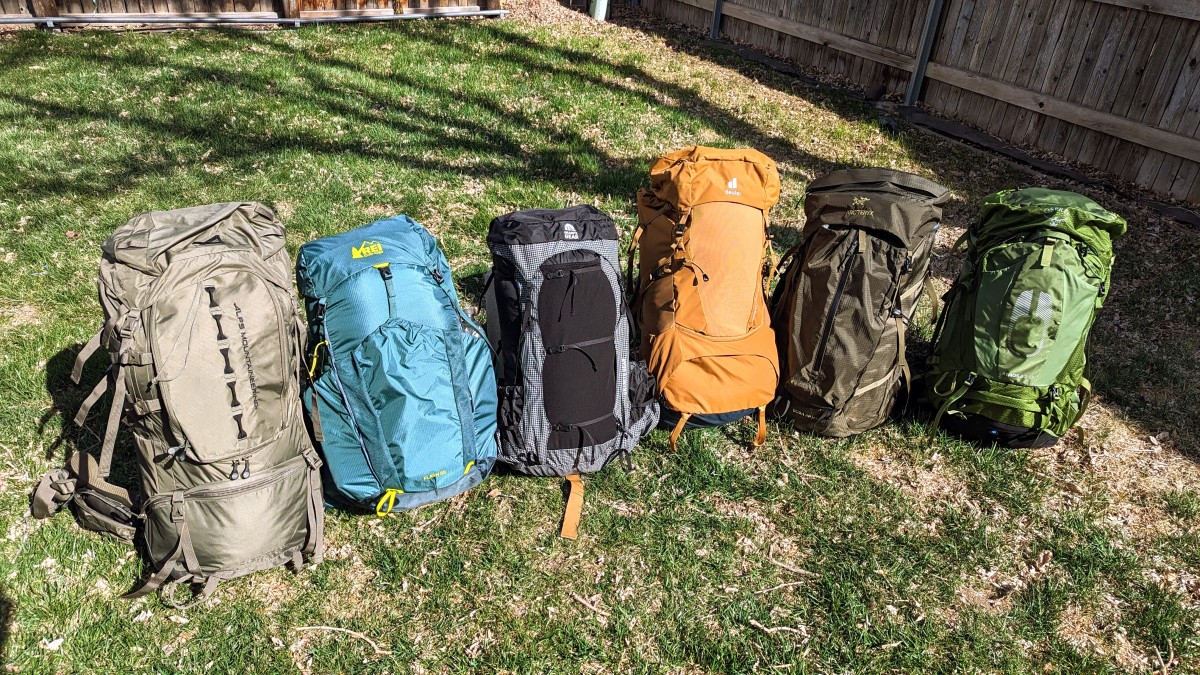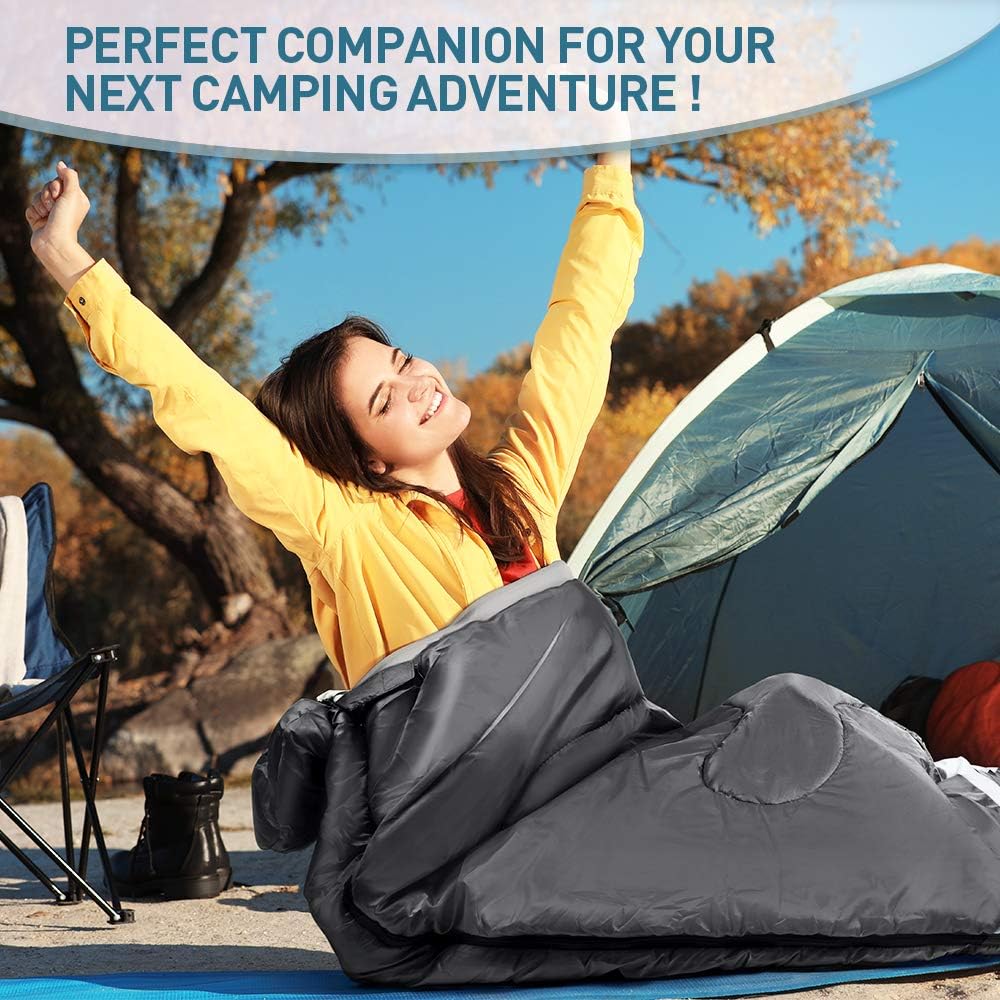For the best hiking sleeping bag, consider the ECOOPRO Warm Weather Sleeping Bag or the Sea to Summit Spark Sleeping Bag, both offering lightweight and portable features suitable for hiking trips. If you’re planning a hike and need reliable sleeping gear, these options provide excellent choices for outdoor enthusiasts.
Are you an avid hiker looking for the perfect sleeping bag to complement outdoor adventures? When it comes to hiking, having a sleeping bag that is lightweight, compact, and offers excellent insulation is essential. The right sleeping bag can significantly impact your overall hiking experience, ensuring you get the rest you need to tackle the trails with energy and enthusiasm.
Numerous factors come into play when choosing the best hiking sleeping bag, from material and weight to temperature ratings and fill power. Selecting a sleeping bag that suits your needs is crucial as a hiker, whether exploring warm weather destinations or braving the cold. With a myriad of options available, finding the
Choosing The Perfect Hiking Sleeping Bag
Having the appropriate sleeping bag is essential for guaranteeing a comfortable and peaceful night’s sleep when going on a hiking excursion. Choosing the perfect hiking sleeping bag can be daunting, with various options available. However, by understanding the types of sleeping bags, considering different weather conditions, and exploring popular brands and their price ranges, you can make an informed decision to suit your specific needs.
Types Of Sleeping Bags
Various sleeping bags are designed to cater to different outdoor situations. Some of the most common types include:
- Mummy sleeping bags are designed to offer maximum warmth and minimal weight, making them ideal for cold weather conditions.
- Rectangular sleeping bags are known for their spaciousness and versatility, providing a comfortable sleeping experience for various weather conditions.
- Quilts offer lightweight and compact options for minimizing pack weight and bulk.
Considerations For Different Weather Conditions
Considering the weather conditions you will likely encounter during your hiking trips is essential in selecting the right sleeping bag. Lightweight and highly breathable sleeping bags such as the Marmot Hydrogen, the Therm-a-Rest Hyperion, and the NEMO Forte are recommended for warm weather. In contrast, colder weather conditions call for sleeping bags with lower temperature ratings and enhanced insulation, such as the Sea to Summit Flame FMI, TETON Sports Tracker Ultralight, and the Nemo Jazz sleeping bag.
Popular Brands And Their Price Range
Exploring popular brands can provide valuable insights into the quality and features of hiking sleeping bags. Brands such as Big Agnes, TETON Sports, Sea to Summit, Nemo, and The North Face offer various options catering to different preferences. Price ranges can vary from as low as $29.99 for the ECOOPRO Warm Weather Sleeping Bag to $549.95 for the Therm-a-Rest Vesper Quilt, allowing hikers to find a sleeping bag that fits their budget while meeting their specific needs.
Features To Look For In A Hiking Sleeping Bag
Hiking sleeping bags are essential gear for any outdoor enthusiast. When considering purchasing a hiking sleeping bag, it’s crucial to prioritize certain features that will ensure comfort, warmth, and lightweight portability during your adventures. Here are some important features to consider when choosing a hiking sleeping bag:
Weight And Size
A crucial factor when selecting a hiking sleeping bag is its weight and size. Look for a sleeping bag that offers a lightweight design without compromising on warmth and comfort. Additionally, consider the pack size when the bag is compressed, influencing its portability on the trail.
Materials And Insulation
The materials and insulation used in a hiking sleeping bag significantly impact its performance. Choose a durable, water-resistant sleeping bag to withstand outdoor elements. Insulation, such as down or synthetic fill, should provide excellent warmth while remaining lightweight.
Temperature Ratings
Pay attention to the temperature ratings of the sleeping bag. Look for a bag with a temperature rating appropriate for the expected weather conditions during your hikes. Selecting a bag that will keep you warm without causing overheating in milder climates is important.
Sleeping Bag Shapes
Consider the various shapes of sleeping bags, such as mummy or rectangular, and their suitability for different preferences and body types. Each shape offers unique heat retention and comfort benefits, so choose one that aligns with your personal preferences and sleeping habits.
Top Picks For Hiking Sleeping Bags
Regarding hiking, a good night’s sleep is essential for maximum enjoyment and performance on the trails. For your hiking trips, selecting the appropriate sleeping bag is essential because it can make the difference between a restful and comfortable night’s sleep. This article’ll explore the top picks for hiking sleeping bags, including warm, cold, and budget-friendly options.
Best Sleeping Bags For Warm Weather
When hiking in warm weather, it’s important to choose a sleeping bag that is lightweight, breathable and has a temperature rating suitable for summer camping. Some of the top-rated summer sleeping bags for backpacking include:
- Marmot Hydrogen
- Therm-a-Rest Hyperion
- NEMO Forte
These bags are lightweight and compressible, providing the necessary insulation and comfort for hot nights on the trail.
Best Sleeping Bags For Cold Weather
You’ll want a sleeping bag with excellent insulation and warmth for cold-weather hiking. Some of the best options for cold-weather camping include:
- Sea to Summit Spark Sleeping Bag
- TETON Sports Trailhead Ultralight Mummy Sleeping Bag
- Big Agnes Echo Park Sleeping Bag
A restful night’s sleep is guaranteed even in the most inclement weather, thanks to the design of these sleeping bags, which keeps you warm and cozy in subfreezing temperatures.
Budget-friendly Sleeping Bags
If you’re on a tight budget but still want a reliable and comfortable sleeping bag for hiking, these budget-friendly options are worth considering:
- ECOOPRO Warm Weather Sleeping Bag
- TETON Sports Celsius Sleeping Bag
- IFORREST Sleeping Bag for Adults Cold Weather Camping Bed Extra-Wide & Warm
These sleeping bags are reasonably priced, giving you the comfort and insulation you need without exceeding your budget.

Credit: gearjunkie.com
Caring For And Storing Your Sleeping Bag
Properly caring for your hiking sleeping bag is essential to maintaining quality and extending lifespan. In addition to keeping your sleeping bag odor-free, routine washing and upkeep will guarantee that its comfort and insulation are maintained. Additionally, knowing how to store your sleeping bag correctly will prevent damage and help maintain its loft and warmth. This section will discuss the proper cleaning and maintenance of your sleeping bag and provide tips on storing it when not in use.
Proper Cleaning And Maintenance
Cleaning your sleeping bag on a regular basis is essential to get rid of body oils, perspiration, and grime that can build up over time. Here are some tips on how to clean and maintain your hiking sleeping bag:
- Check the label: Before cleaning your sleeping bag, always check the care label for specific instructions from the manufacturer.
- Spot cleaning: For small stains or spills, spot-clean the affected area with mild soap and water. Be gentle and avoid scrubbing vigorously.
- Handwashing: If you can wash your sleeping bag in a front-loading washer, do so on a gentle cycle with a small amount of detergent. Alternatively, you could hand wash it in a big sink or bathtub.
- Drying: After washing, hang your sleeping bag to air dry. Avoid direct sunlight as it can damage the fabric. Gently fluff and rotate the bag occasionally to prevent clumping of the insulation.
- Storage: Once your sleeping bag is clean and dry, store it in a dry, well-ventilated area. Avoid compressing it for long periods, as this can damage the insulation.
How To Store Your Sleeping Bag
Properly storing your hiking sleeping bag is crucial to maintain its loft and effectiveness. Here are some tips on how to store your sleeping bag:
- Loose storage: Never store your sleeping bag in a compressed or stuffed sack. Instead, store it in a loose, breathable storage bag or hang it in a closet.
- Keep it dry: Ensure your sleeping bag is completely dry before storing it to prevent mold and mildew growth. If necessary, air it out before storing it.
- Avoid extreme temperatures: Avoid storing your sleeping bag in extreme temperatures, such as in a hot attic or a cold basement. Extreme temperatures can affect the insulation and reduce its performance.
- Avoid sharp objects: Keep your sleeping bag away from sharp objects to prevent punctures or tears.
- Regularly rotate: To prevent insulation compression, regularly rotate your sleeping bag’s storage position.
By following these care and storage tips, you can ensure that your hiking sleeping bag remains in excellent condition and provides you with many comfortable nights on the trail.
Additional Tips And Resources
Looking for additional tips and resources on finding the best hiking sleeping bag? Check out our top picks for lightweight, waterproof, and compact sleeping bags that are perfect for your next outdoor adventure. Get expert advice on choosing the right temperature rating and shape for your needs.
Understanding Fill Power
Fill power is a term commonly used when discussing the insulation quality of a hiking sleeping bag. It refers to the amount of space one ounce of down insulation will occupy at its maximum loft. The higher the fill power, the better the insulation and warmth-to-weight ratio of the sleeping bag. When choosing a hiking sleeping bag, look for a higher fill power rating for better insulation and thermoregulation during colder temperatures.
Choosing The Right Sleeping Pad
When it comes to hiking sleeping bags, choosing the right sleeping pad is just as important as selecting the right bag. A sleeping pad provides cushioning and comfort and is vital in insulating you from the ground, keeping you warm throughout the night. Various types of sleeping pads are available, including self-inflating, foam, and air pads. Consider factors such as weight, insulation, and comfort when choosing the right sleeping pad to complement your hiking sleeping bag.
Comparing Sleeping Bags
When comparing sleeping bags for hiking, it’s important to consider factors such as temperature rating, weight, insulation type, and design. Hiking sleeping bags are available in various shapes, including rectangular and mummy-style. Rectangular bags offer more room for movement, while mummy-style bags are more efficient at trapping heat. Consider your specific needs and preferences when choosing between these two popular types. Additionally, consider the price range that fits your budget, as sleeping bags come at a wide range of price points.
In conclusion, understanding fill power, choosing the right sleeping pad, and comparing sleeping bags are essential when looking for the best hiking sleeping bag. These tips and resources will help you decide when selecting a sleeping bag suitable for your hiking needs.

Credit: www.outdoorgearlab.com

Credit: www.amazon.com
Frequently Asked Questions For Best Hiking Sleeping Bag
What Kind Of Sleeping Bag Are Best For Hiking?
When hiking, lightweight and compressible sleeping bags like Marmot Hydrogen, Therm-a-Rest Hyperion, and NEMO Forte are top choices for warm weather. Temperature ratings are suitable for summer camping. Your sleeping bag should weigh what you are comfortable carrying. Fill power indicates the quality of down in the sleeping bag.
What Is The Best Sleeping Bag For Hiking In Warm Weather?
The best sleeping bag for warm-weather hiking is lightweight, compact, and has a temperature suitable for summer camping, such as the Marmot Hydrogen, Therm-a-Rest Hyperion, and NEMO Forte. Consider weight, material, and temperature ratings when choosing a hiking sleeping bag.
How Heavy Should A Hiking Sleeping Bag Be?
A hiking sleeping bag should be lightweight for ease of carrying.
What Do Hikers Sleep On?
Hikers sleep on sleeping bags specifically designed for outdoor use. These lightweight and compact bags provide insulation and comfort during camping trips. Sleeping bags are available in various materials and temperature ratings suitable for different weather conditions.
Conclusion
When it comes to finding the best hiking sleeping bag, it’s important to prioritize lightweight and compact options that provide both comfort and warmth. The top-rated summer sleeping bags mentioned in this blog post, such as the Marmot Hydrogen, Therm-a-Rest Hyperion, and NEMO Forte, offer the perfect combination of functionality and performance for warm-weather camping.
Remember to consider factors like weight, material, shape, and temperature ratings when selecting a sleeping bag for your outdoor adventures. Happy hiking!

